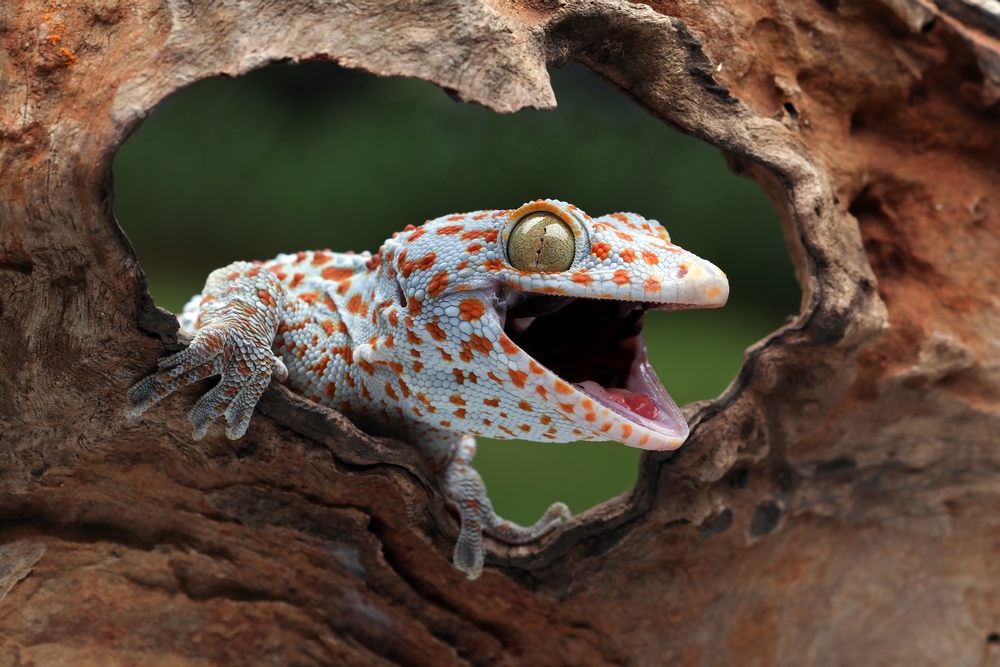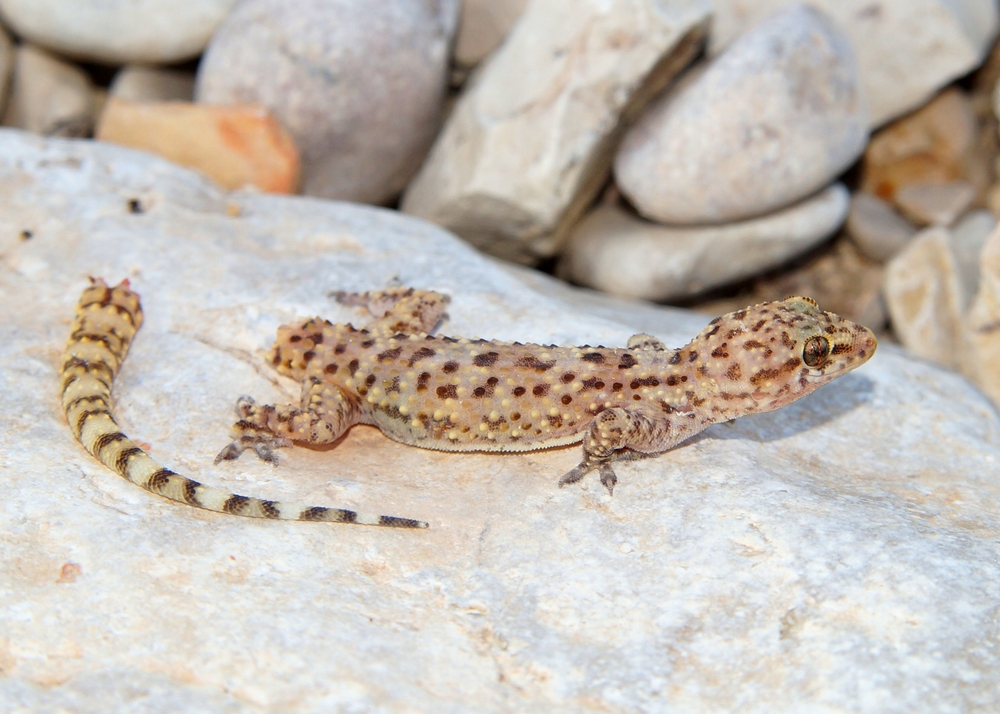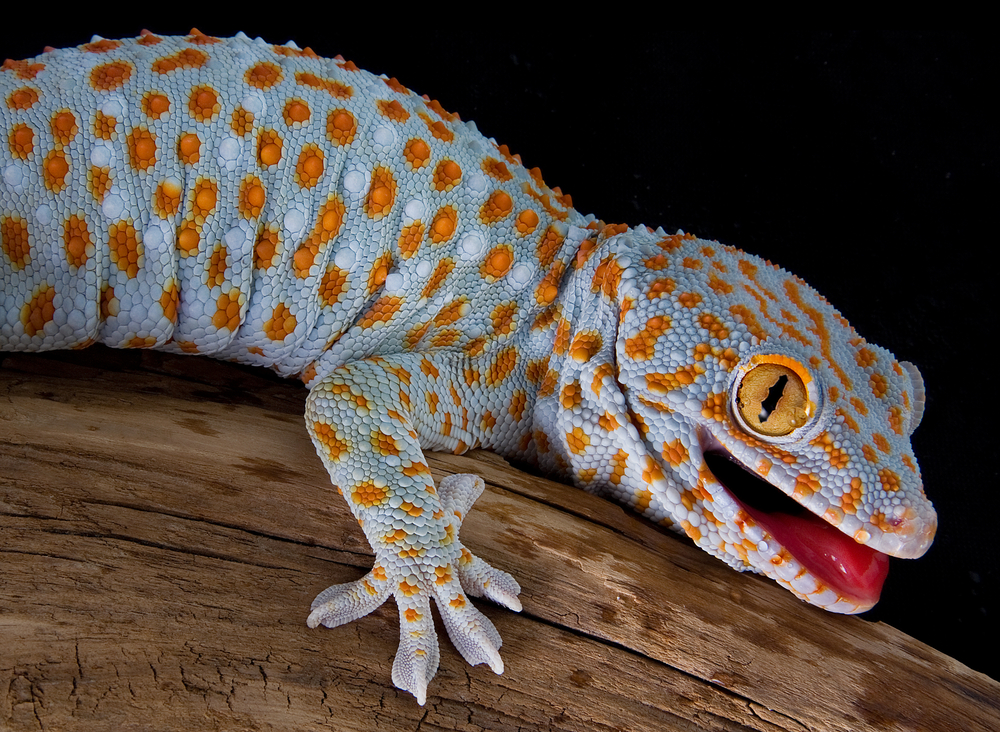Tokay geckos will grow a tail under two different circumstances. The first is during embryonic growth as the gecko develops within the egg. The second is if they shed their tail and need to regrow it. Recent research from The Institute of Biology at Leiden University, Netherlands, has shown that these processes use distinct pathways, genes and origin cells.

Why do Tokay geckos shed their tail?
Shedding tails is not unique to Tokay geckos; it is a complex evolutionary trait called autotomy which is shared by many lizards. The tail can be shed under different situations, with the frequency and tendency varying between species. Autotomy is predominantly performed to avoid predation, either if they are captured by the tail or as a distraction technique. Once dropped, the tail can even twitch momentarily.

Unlike Tokay geckos, not all lizards that perform autotomy undergo tail regeneration. Crested geckos, for example, will not regrow their tail if dropped- leading to the affectionate name ‘frog butt’ within the reptile community. For those lizards that undergo tail regeneration, the tail is functional but has distinct anatomical differences. The vertebrae are replaced with a continuous tube of cartilage, which is lined with ependymal cells, rather than containing a spinal cord. Ependymal cells usually line the spinal cord’s central canal. The most obvious difference, which many keepers will notice, is that the scalation may differ.
Embryonic tail growth vs regenerative tail growth
The research found that tokay gecko embryonic tail growth and tail regeneration were in fact distinct, requiring different pathways, genes and cells. Less than half of the development-related genes expressed during embryonic tail growth are also expressed during tail regeneration. Pluripotent stem cells dominate the tail bud during embryonic growth. Pluripotent stem cells are undifferentiated ‘base’ cells capable of differentiating into nearly any cell within the body. In contrast, growth of the regenerated tail is predominantly from stromal cells. These cells are found in adult structural tissues, such as bone marrow, and can differentiate into various connective tissues.
During embryonic tail growth, the tail bud is small, estimated to be around 1 mm at the apex of the tail. All the cells that will form the tail, divide, grow and differentiate from this small bud. What cells need to be where is already blueprinted in the Tokay gecko’s DNA. During tail regeneration, there is no bud. Instead, all growth is from a blastema- a group of cells capable of growth and regeneration. The blastema is across the tail break and relies on the preexisting tail for positional information on what cells need to be where. This ability to remember what cells were where was attributed to ‘satellite’ cells. The way these cells act appears to be unique to the lizard lineage. This unique tail regeneration pathway is distinct to limb and tail regeneration in other animals. Regeneration in axolotls and salamanders, for example, is much closer to embryonic growth.
The full paper can be found here.
By Adam Colyer and Sanya Aggarwal
If you enjoyed reading about unique lizard evolutionary traits, please click here to read about limb-reduction in skinks.
